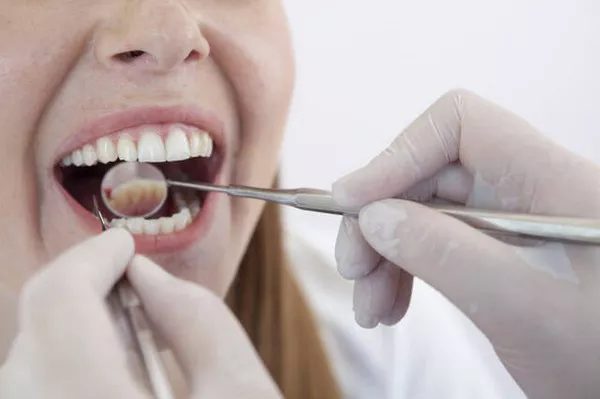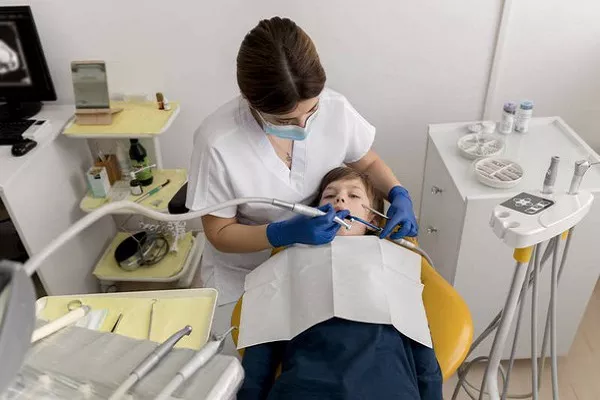Orthognathic surgery, commonly known as jaw surgery, is a complex surgical procedure performed to correct significant jaw misalignments and facial discrepancies. In many cases, orthognathic surgery is accompanied by orthodontic treatment, involving the use of braces to prepare the teeth and jaws for the surgical procedure. If you are considering orthognathic surgery, you may wonder how long you need to wear braces before undergoing the surgery. In this article, we will delve into the process of preparing for jaw surgery with braces, the factors influencing the treatment duration, and what to expect during this orthodontic journey.
Understanding Orthognathic Surgery
Orthognathic surgery, also known as jaw surgery, is a specialized surgical procedure aimed at correcting significant jaw misalignments and facial discrepancies. This complex surgical intervention addresses various issues related to the jaws, including overbites, underbites, crossbites, open bites, and asymmetry. Orthognathic surgery can improve both the function and aesthetics of the face and is typically performed by an oral and maxillofacial surgeon in collaboration with an orthodontist.
Understanding the Need for Orthognathic Surgery:
Orthognathic surgery is considered when the misalignment of the jaws and teeth is beyond the scope of conventional orthodontic treatment alone. Some of the common reasons for considering orthognathic surgery include:
Severe Malocclusions: Individuals with severe overbites, underbites, or crossbites that affect their bite and facial appearance may require orthognathic surgery.
Difficulty Chewing and Speaking: Misaligned jaws can lead to difficulties in chewing and speaking, affecting daily functions.
Breathing Problems: In cases of jaw misalignments that contribute to obstructive sleep apnea or breathing difficulties, orthognathic surgery may be recommended.
Facial Asymmetry: Significant facial asymmetry due to jaw discrepancies can be corrected with orthognathic surgery.
Temporomandibular Joint (TMJ) Disorders: Some TMJ disorders caused by jaw misalignments may benefit from orthognathic surgery.
The Orthognathic Surgery Process:
Comprehensive Evaluation:The first step in the orthognathic surgery process is a comprehensive evaluation by an oral and maxillofacial surgeon and an orthodontist. The evaluation involves a detailed examination of the facial structure, dental alignment, jaw relationships, and overall oral health.
Treatment Planning:Based on the evaluation, the surgical team formulates a personalized treatment plan. This plan includes pre-surgical orthodontic preparation, the surgical procedure itself, and post-surgical orthodontic adjustments.
Pre-Surgical Orthodontic Phase:Before the surgery, the patient undergoes a pre-surgical orthodontic phase. Braces are used to align the teeth and create the best possible dental occlusion for the surgical procedure.
Surgical Procedure:The actual surgery involves repositioning the jawbones to correct the misalignments. The surgeon makes incisions inside the mouth to access the jawbones, and special plates, screws, or wires may be used to hold the bones in their new positions.
Post-Surgical Orthodontic Phase:After the surgery, there is a post-surgical orthodontic phase to fine-tune the bite and dental alignment. This phase ensures that the teeth fit together correctly and that the desired facial aesthetics are achieved.
Recovery and Aftercare:
The recovery period after orthognathic surgery varies from patient to patient, but most individuals require several weeks to fully heal. During this time, patients may experience facial swelling, bruising, and some discomfort. A soft diet is usually recommended initially to avoid putting pressure on the healing jawbones.
Regular follow-up visits with both the oral and maxillofacial surgeon and the orthodontist are essential to monitor the healing process and make necessary adjustments to the braces.
Benefits of Orthognathic Surgery:
Orthognathic surgery offers a range of benefits, including:
Improved Facial Aesthetics: Orthognathic surgery can enhance the overall balance and harmony of facial features, resulting in a more attractive appearance.
Corrected Bite: By aligning the jaws and teeth, the surgery improves the bite, making chewing and speaking more efficient.
Better Oral Function: Patients experience improved oral function and reduced strain on the jaw joints and muscles.
Enhanced Confidence: The correction of facial and jaw discrepancies can significantly boost a patient’s self-confidence and self-esteem.
The Orthognathic Surgery Process:
Understanding Braces:
Braces are a common orthodontic treatment used to correct dental misalignments and achieve a straighter, healthier smile. They consist of metal, ceramic, or clear brackets bonded to the teeth and connected by wires. Braces apply gentle pressure to gradually move the teeth into their desired positions over time. This article provides a brief introduction to braces and their purpose in orthodontic treatment.
Dental Misalignments:Dental misalignments, also known as malocclusions, can include problems like overcrowded teeth, gaps between teeth, overbites, underbites, crossbites, and open bites. These misalignments can impact both oral health and aesthetics.
The Purpose of Braces:The primary purpose of braces is to correct dental misalignments by gradually moving the teeth into proper alignment. Straightening the teeth helps improve bite function, enhances oral hygiene, and contributes to overall oral health.
Types of Braces:Braces come in various types, including traditional metal braces, ceramic braces that blend with the teeth, and clear aligners like Invisalign. Each type offers unique benefits and can be tailored to suit individual needs and preferences.
Orthodontic Treatment Process:The orthodontic treatment process typically begins with an initial consultation with an orthodontist. During this visit, the orthodontist evaluates the patient’s dental alignment, discusses treatment options, and formulates a personalized treatment plan.
Braces Placement:After the treatment plan is determined, the braces are carefully placed on the teeth. Metal brackets are bonded to the front surface of the teeth, while ceramic or clear brackets offer a more discreet appearance.
Adjustment Visits:Throughout the treatment, patients have regular adjustment visits with their orthodontist. During these visits, the orthodontist makes necessary adjustments to the braces to continue guiding the teeth into their desired positions.
Treatment Duration:The duration of braces treatment varies depending on the severity of the dental misalignments. On average, braces may be worn for 1 to 3 years. However, some cases may require a shorter or longer treatment period.
Oral Care During Treatment:Proper oral care is essential during braces treatment. Patients need to brush and floss regularly, avoiding certain foods that can damage the braces.
Retention Phase:After the braces are removed, a retention phase follows to maintain the new alignment of the teeth. This phase often involves wearing retainers to prevent the teeth from shifting back to their original positions.
Comprehensive Evaluation:
The orthognathic surgery process begins with a comprehensive evaluation by an orthodontist and an oral and maxillofacial surgeon. They will assess your facial structure, dental alignment, jaw relationships, and overall oral health.
Orthodontic Treatment Planning:Once the need for orthognathic surgery is established, a treatment plan is developed, which includes the use of braces to prepare the teeth and jaws for the surgery.
Pre-Surgical Orthodontic Phase:The pre-surgical orthodontic phase
involves aligning the teeth using braces. This phase can take several months to ensure that the teeth are properly positioned for the surgical procedure.
Factors Influencing the Duration of Braces before Jaw Surgery:
Severity of Jaw Discrepancy:The complexity of the jaw misalignment plays a significant role in determining the duration of pre-surgical orthodontic treatment.
Dental Alignment:
The initial alignment of the teeth before starting braces treatment can influence the time needed to achieve the desired dental position.
Compliance with Orthodontic Instructions:
Patient compliance with wearing rubber bands, headgear, or other orthodontic appliances can impact the treatment progress and duration.
Individual Healing Rate:Each person’s body responds differently to orthodontic treatment, and the healing rate can vary.
Age and Bone Maturity:Younger patients with still-developing jaws may respond more quickly to orthodontic treatment than adults with fully matured bones.
Surgical Scheduling:The timing of the orthodontic treatment is coordinated with the surgical schedule, considering factors such as the surgeon’s availability and the patient’s readiness for surgery.
What to Expect During Your Orthodontic Journey:
Braces Placement:The orthodontic treatment begins with the placement of braces on the teeth. The braces use gentle forces to move the teeth into their correct positions.
Regular Adjustment Visits:Throughout the pre-surgical orthodontic phase, you will have regular adjustment visits with your orthodontist. During these visits, the braces will be adjusted to continue guiding the teeth into their desired positions.
Monitoring Progress:Your orthodontist will closely monitor your progress and make any necessary adjustments to ensure the teeth are properly aligned for the surgical procedure.
Preparing for Surgery:As the teeth reach the desired positions, you and your surgical team will coordinate the timing of the surgery. The surgery is typically scheduled after the orthodontic treatment is complete.
Conclusion:
The duration of wearing braces before jaw surgery can vary depending on the complexity of the jaw discrepancy, individual healing rate, dentalalignment, and other factors. Preparing the teeth and jaws for orthognathic surgery with braces is a crucial step in achieving successful surgical outcomes. The pre-surgical orthodontic phase involves aligning the teeth to ensure proper dental alignment before the surgery. Throughout this orthodontic journey, patient compliance with orthodontic instructions and regular adjustment visits are essential for achieving the desired results. Collaboration between the orthodontist and oral and maxillofacial surgeon is vital in coordinating the timing of the surgery for optimal treatment outcomes. Remember that the process is individualized, and your orthodontist and surgical team will guide you through every step of your orthognathic surgery and braces journey.
Related Topics:




























